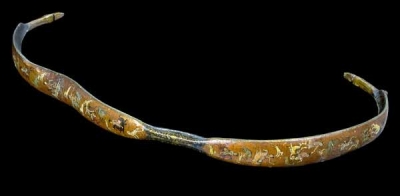114
144
355
98
109
358
104
80
97
66
64
74
102
96
107
348
99
105
82
90
86
116
141
135
143
68
146
332
62
76
83
354
139
77
103
137
142
147
140
63
117
94
125
69
70
92
71
67
78
145
136
128
111
131
343
75
110
106
89
132
88
108
134
118
87
322
119
100
95
122
133
79
382
113
127
85
91
72
130
129
121
65
84
228
229
73
314
315
124
81
120
101
123
138
115
93
385
112
Recurve bow (1936.76.1)
 IranRecurve bow from Iran, Asia. Owned by Alfred Axtell. Purchased by the Museum in 1936.
IranRecurve bow from Iran, Asia. Owned by Alfred Axtell. Purchased by the Museum in 1936.
This is a particularly fine example of a highly decorated, recurved composite bow of the 17th or 18th century. It shows the distinctive unstrung C-shape of the Turko-Persian bow form. This results from the sinew backing, which is so tight that, when strung, the bow is drawn into an arc that is completely opposite in profile.
The back is painted with two friezes, one on each arm, which depict mounted archers and their hunting dogs falling upon lions, antelope and other animals of the chase. These are as finely executed as any contemporary Moghul miniatures so this was likely to be the weapon of a high-status individual.





